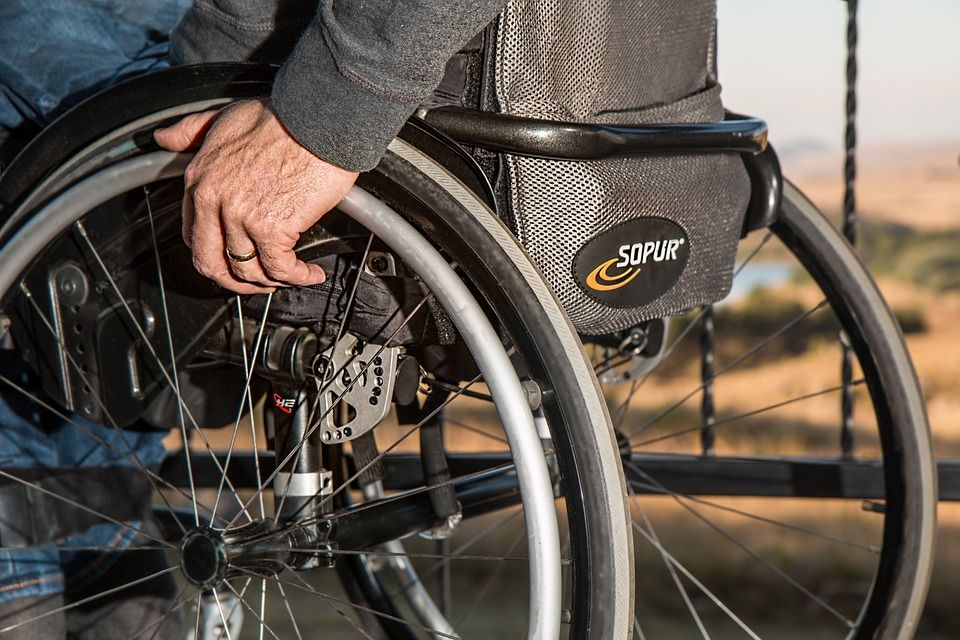Faced with many barriers and less able to maintain social and physical distance, persons with disabilities are at greater risk of contracting COVID-19 and falling severely ill as a result of the disease. However, in the EU they have not been explicitly included in priority groups for vaccination.
National vaccination strategies do not have clear-cut criteria for prioritising persons with disabilities (PWDs) to receive the COVID-19 vaccine, with the exception of those that are institutionalised or at extreme risk of infection due to, for example, organ or stem-cell transplants.
Instead, in many Member States PWDs cannot be certain whether the condition behind their disability will make them eligible to receive the vaccine before people of the same age in the general population.
Loosely defined national rules about which people belong to non-age related priority groups, coupled with the acute shortage of vaccine supplies in Europe and vaccine hesitancy, have led to confusion and chaos on the ground in quite a number of cases, leaving many PWDs at the bottom of the waiting lists for vaccination.
Spain, Italy and France
The Spanish vaccination strategy has been updated on four occasions. It prioritises PWDs if they are in nursing homes or in sheltered accommodation, if they have assistants and carers and if they receive services in shared spaces, such as day centres. Nevertheless, it does not explicitly prioritise people with physical or bodily disabilities, for example, despite the fact that such disabilities do increase their risk of severe illness.
In the absence of standardised criteria, Spanish communities and regions have come up with different rules concerning which conditions enable people to be first in line for a vaccine and which do not.
Such differences between regions are also pronounced in Italy, with people with the same condition being vaccinated in one region but not in another, Mr Barbieri said.
He stressed that PWDs were not prioritised at first, but the authorities tried to rectify this in early January as a result of pressure from disability associations and an article in the media highlighting the fact that the vaccination plan forgot about
PWDs and their families.
Following a change of government and with the onset of vaccine shortages, a new vaccination plan was created which categorised vaccine eligibility. The result was often absurd inequalities as well as total confusion and chaos, Mr Barbieri said.
For example, PWDs in Lombardy will start to receive their first shots on 15 April, whereas due to a weakened healthcare system, Calabria will not take bookings for PWDs before May.
Albert Prevos from the French Council of Disabled People for European Affairs (CFHE) stressed that PWDs not living in residences were also vulnerable and should be prioritised, which has not been the case in France: People who live alone should not be victims of the shortage of vaccines, yet they are often forgotten about.
Baltic and Scandinavian Countries
In Lithuania, following active advocacy by disability groups, the government agreed to include parents caring for children with disabilities as well as other carers in priority groups. This was not the case in the beginning, said the Lithuanian member Dovile Juodkaite, who talked about the situation in her own and other Baltic countries.
Unlike other Scandinavian countries, which classify disability as a risk factor for severe cases of COVID, Denmark now mainly prioritises according to age. This has led to considerable confusion, with poor definitions of those who fall within priority groups. As a result, GPs, hospitals and individuals were confused about who would be vaccinated first, said the EESC’s Danish member Sif Holst.
In Denmark the communication of the vaccine programme has been poorly executed. No one is told which category they belong to or when they can expect to be vaccinated,
Ms Holst said.
Those not categorised as belonging to a priority group will be vaccinated strictly according to age criteria. This can lead to a 30-year-old person with Down Syndrome or multiple sclerosis waiting their turn alongside people of the same age who do not have a disability.
Romania and Greece
EESC member Tudorel Tupilusi, who heads the organisation for blind people in Romania, said the Romanian disability organisations had successfully lobbied the government to prioritise non-institutionalised PWDs during the second phase, so that they can receive their jabs alongside people aged 65 and older.
However, there were hiccups and bumps at the beginning
, as at first PWDs could only get an appointment to receive the vaccine via the local authorities. This would have dragged out the whole process, but the system changed following an intervention by disability groups. As a result of many issues, the number of Romanians with disabilities who were vaccinated by March remained low, with only 3 000 receiving both doses.
In Greece, disability organisations started campaigning for PWDs to be prioritised before the vaccine rollout in December, saidthe EESC’s Ioannis Vardakastanis.
Disability organisations had both a strategic and operational role, developing close cooperation with the authorities and securing priority for many PWDs. Now they are trying to secure vaccines for blind and visually impaired people as well as tetraplegics under the age of 60.







Leave a Reply